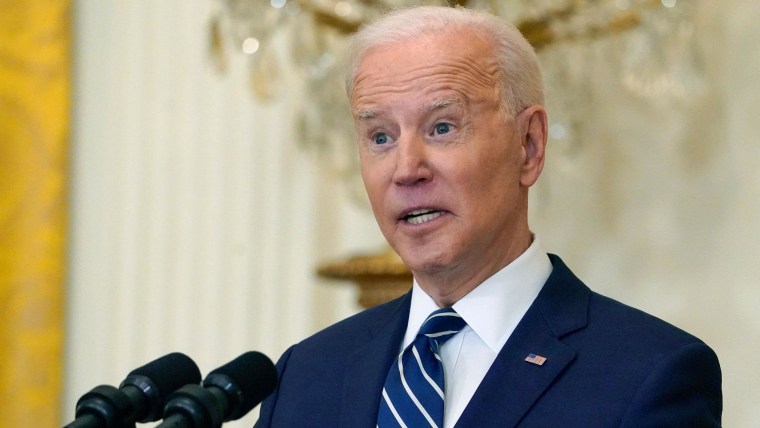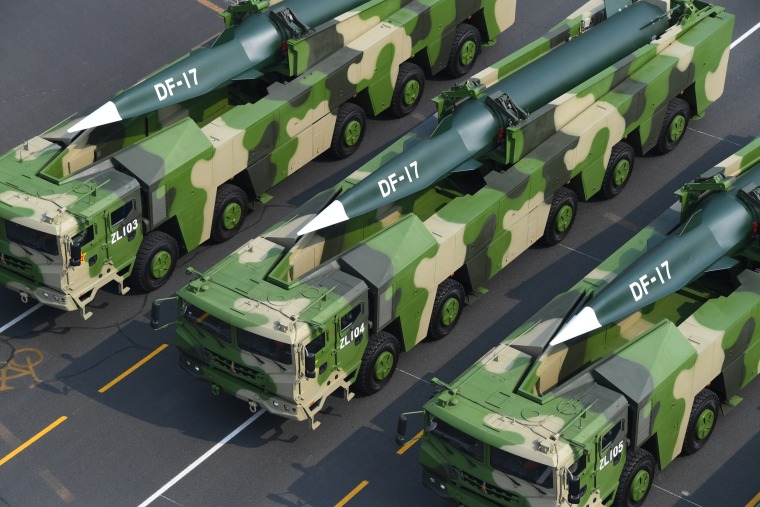US Navy Strategy Details War Plan to stop Russia and China
The three services unveiled their new "integrated" strategy, titled "Advantage at Sea: Prevailing with Integrated All-Domain Naval Power," on Dec. 17, 2020. The document includes discussions about of a number of concepts of operation that the trio has been openly discussing, such as a greater focus on distributed operations leveraging a dramatically reorganized Marine Corps riding on smaller amphibious warfare ships, the increased use of unmanned aircraft and naval platforms, and distributed sensor and communications networks. There is also a "renewed emphasis on fighting for and gaining sea control" in light of growing concerns about a potential higher-end future naval fight with a major adversary, such as China or Russia.
In consultation with the intelligence community, U.S. military planners identify events that should be used for planning the size and mix of U.S. forces. There is a tension, however, between planning for the most likely situations as opposed to worst-case events. For example, large-scale, high-intensity conflicts like China invading Taiwan or Russia invading Latvia would be challenging for U.S. and allied militaries but are less likely compared to scenarios such as protracted gray-zone confrontations between China or Russia and their neighbors. U.S. planners usually choose high-intensity scenarios, although protracted conflicts may be harder for the U.S. military to address.
After the scenario subjects are decided, planners build a detailed description of the events leading up to the conflict, the expected actions of adversary, allied, and noncombatant governments and militaries, and the order of battle expected to be employed by each participating nation. Scenarios usually do not detail U.S. government or military actions.
Explain the conceptual framework in designing scenarios for non-conventional conflict.
Enjoying this article? Click here to subscribe for full access. Just $5 a month.
Non-conventional conflicts are those that do not involve sustained combat between regular armed forces. Examples include insurgencies by militia forces being supported by a state aggressor, such as in Ukraine; harassment of opposing government and commercial activities in international airspace or waters, as in the East and South China Seas; or a de facto blockade of a disputed territory using militia, law enforcement, and civilian forces like that around the Senkaku Islands.
The U.S. Department of Defense (DoD) plans for these events, but they are low priority. However, because they are less intense than traditional scenarios like invasions, non-conventional confrontations can be sustained longer by the aggressor and employ a wide range of proxy, civilian, and paramilitary forces that create challenges for the U.S. military. The predominance of large, highly capable units in U.S. forces makes protracted campaigns potentially unaffordable and reduces U.S. options at lower levels of escalation. As a result, the U.S. government can be portrayed as the aggressor in a non-conventional conflict because the forces it employs are disproportionate for the situation.Identify fundamental assumptions about how the U.S. might engage in conventional and non-conventional contest with China or Russia and explain how these assumptions should be tested in scenario risk analysis.ADVERTISEMENT
The DoD has evolved a strong set of assumptions regarding conventional conflicts. The U.S. military generally assumes it will not be the aggressor and will have some, potentially short, warning that will allow the mobilization of forces to the conflict area. Forces already deployed respond to aggression and attempt to delay or deny the enemy’s success while preparing for the arrival of additional forces from adjacent theaters or the continental United States.
The U.S. military has a less coherent view regarding non-conventional conflict. Because these scenarios occur below the level of armed combat, U.S. military forces are often not an appropriate response, but the U.S. government does not continuously deploy law enforcement forces like the Coast Guard or paramilitary units like contractors – although Coast Guard deployments to the Western Pacific are rising. The use of conventional forces is episodic and limited to shows of force, exercises, or freedom of navigation operations rather than directly countering the non-conventional aggression.
What are key challenges and opportunities for U.S. military planners in preparing for potential military confrontation involving China or Russia?
China and Russia are difficult to plan against because they pose multidimensional challenges in areas close to their own territory. Both countries established extensive sensor networks using radar, electronic intelligence, and space imagery around their territory that can be used for surveillance and targeting of a large inventory and variety of precision ballistic and cruise missiles. Their sensor and weapon networks give China and Russia the ability to conduct rapid, large-scale attacks in regions they have interests such as the East and South China Seas for China and Eastern Europe for Russia.
In a conventional conflict, Chinese or Russian missiles give their militaries the ability to delay U.S. reinforcements while quickly attacking U.S. allies to coerce them into submission. In a non-conventional conflict, China and Russia can threaten U.S. military forces and force U.S. commanders to either send in small units at high risk or employ larger units that can defend themselves but are disproportionate for the non-conventional confrontation. As evidenced by the success of Chinese or Russian gray-zone operations over the last decade, the U.S. government has not determined a satisfactory non-conventional response.
How should the new U.S. administration align defense spending allocation with emerging non-conventional threats?
The U.S. government will need a larger number of units that are smaller and less expensive to buy and maintain compared to today’s U.S. military. Less heavily-armed units such as Littoral Combat Ships, Coast Guard cutters, or company-size National Guard formations would be more proportional in non-conventional confrontations against Russian-supported proxy forces or People’s Armed Forces Maritime Militia ships. These units would also be affordable enough to buy and operate in large enough numbers so they can sustain a robust presence in contested areas for a protracted periods.
Top US military commanders explained the new tactics to Congress in March in a series of budget hearings. The commandant of the US Marine Corps, Gen. David Berger, told the Senate Armed Services Committee on March 5 that small units of Marines armed with precision missiles could assist the US Navy to gain control of the seas, particularly in the Western Pacific.
"The Tomahawk missile is one of the tools that is going to allow us to do that," he said.
The Tomahawk — which first gained fame when launched in massed strikes during the 1991 Gulf War — has been carried on US warships and used to attack land targets in recent decades. The Marines would test fire the cruise missile through 2022 with the aim of making it operational the following year, top Pentagon commanders testified.
At first, a relatively small number of land-based cruise missiles will not change the balance of power. But such a shift would send a strong political signal that Washington is preparing to compete with China's massive arsenal, according to senior US and other Western strategists.
Longer term, bigger numbers of these weapons combined with similar Japanese and Taiwanese missiles would pose a serious threat to Chinese forces, they say. The biggest immediate threat to the PLA comes from new, long-range anti-ship missiles now entering service with US Navy and Air Force strike aircraft.
"The Americans are coming back strongly," said Ross Babbage, a former senior Australian government defense official and now a non-resident fellow at the Washington-based Center for Strategic and Budgetary Assessments, a security research group. "By 2024 or 2025 there is a serious risk for the PLA that their military developments will be obsolete."
A Chinese military spokesman, Senior Col. Wu Qian, warned last October that Beijing would "not stand by" if Washington deployed land-based, long-range missiles in the Asia-Pacific region. China's foreign ministry accused the United States of sticking "to its Cold War mentality" and "constantly increasing military deployment" in the region.
"Recently, the United States has gotten worse, stepping up its pursuit of a so-called 'Indo-Pacific strategy' that seeks to deploy new weapons, including ground-launched intermediate-range missiles, in the Asia-Pacific region," the ministry said in a statement to Reuters. "China firmly opposes that."
US military unshackled
While the coronavirus pandemic rages, Beijing has increased its military pressure on Taiwan and exercises in the South China Sea.
In a show of strength, on April 11 the Chinese aircraft carrier Liaoning led a flotilla of five other warships into the Western Pacific through the Miyako Strait to the northeast of Taiwan, according to Taiwan's Defense Ministry. On April 12, the Chinese warships exercised in waters east and south of Taiwan, the ministry said.
Meanwhile, the US Navy was forced to tie up the aircraft carrier USS Theodore Roosevelt at Guam while it battles to contain a coronavirus outbreak among the crew of the giant warship. However, the US Navy managed to maintain a powerful presence off the Chinese coast.
The guided-missile destroyer USS Barry passed through the Taiwan Strait twice in April. And the amphibious assault ship USS America last month exercised in the East China Sea and South China Sea, the US Indo-Pacific Command said.
In a series last year, Reuters reported that while the US was distracted by almost two decades of war in the Middle East and Afghanistan, the PLA had built a missile force designed to attack the aircraft carriers, other surface warships and network of bases that form the backbone of American power in Asia. Over that period, Chinese shipyards built the world's biggest navy, which is now capable of dominating the country's coastal waters and keeping US forces at bay.
The series also revealed that in most categories, China's missiles now rival or outperform counterparts in the armories of the US alliance.
China derived an advantage because it was not party to a Cold War-era treaty — the Intermediate-Range Nuclear Forces Treaty (INF) — that banned the United States and Russia from possessing ground-launched ballistic and cruise missiles with ranges from 500 kilometers to 5,500 kilometers. Unrestrained by the INF pact, China has deployed about 2,000 of these weapons, according to US and other Western estimates.
While building up its missile forces on land, the PLA also fitted powerful, long-range anti-ship missiles to its warships and strike aircraft.
This accumulated firepower has shifted the regional balance of power in China's favor. The United States, long the dominant military power in Asia, can no longer be confident of victory in a military clash in waters off the Chinese coast, according to senior retired US military officers.
But the decision by President Donald Trump last year to exit the INF treaty has given American military planners new leeway. Almost immediately after withdrawing from the pact on August 2, the administration signaled it would respond to China's missile force. The next day, US Secretary for Defense Mark Esper said he would like to see ground-based missiles deployed in Asia within months, but he acknowledged it would take longer.
Later that month, the Pentagon tested a ground-launched Tomahawk cruise missile. In December, it tested a ground-launched ballistic missile. The INF treaty banned such ground-launched weapons, and thus both tests would have been forbidden.
A senior Marines commander, Lt. Gen. Eric Smith, told the Senate Armed Services Committee on March 11 that the Pentagon leadership had instructed the Marines to field a ground-launched cruise missile "very quickly."
The budget documents show that the Marines have requested $125 million to buy 48 Tomahawk missiles from next year. The Tomahawk has a range of 1,600km, according to its manufacturer, Raytheon Company.
Smith said the cruise missile may not ultimately prove to be the most suitable weapon for the Marines. "It may be a little too heavy for us," he told the Senate Armed Services Committee, but experience gained from the tests could be transferred to the army.
Smith also said the Marines had successfully tested a new shorter-range anti-ship weapon, the Naval Strike Missile, from a ground launcher and would conduct another test in June. He said if that test was successful, the Marines intended to order 36 of these missiles in 2022.
The US Army is also testing a new long-range, land-based missile that can target warships. This missile would have been prohibited under the INF treaty.
The Marine Corps said in a statement it was evaluating the Naval Strike Missile to target ships and the Tomahawk for attacking targets on land. Eventually, the Marines aimed to field a system "that could engage long-range moving targets either on land or sea," the statement said.
The Defense Department also has research underway on new, long-range strike weapons, with a budget request of $3.2 billion for hypersonic technology, mostly for missiles.
China's foreign ministry drew a distinction between the PLA's arsenal of missiles and the planned US deployment.
It said China's missiles were "located in its territory, especially short and medium-range missiles, which cannot reach the mainland of the United States. This is fundamentally different from the US, which is vigorously pushing forward deployment."
Bottling up China's navy
Military strategists James Holmes and Toshi Yoshihara suggested almost a decade ago that the first island chain was a natural barrier that could be exploited by the American military to counter the Chinese naval build-up. Ground-based anti-ship missiles could command key passages through the island chain into the Western Pacific as part of a strategy to keep the rapidly expanding Chinese navy bottled up, they suggested.
In embracing this strategy, Washington is attempting to turn Chinese tactics back on the PLA. Senior US commanders have warned that China's land-based cruise and ballistic missiles would make it difficult for US and allied navies to operate near China's coastal waters.
But deploying ground-based US and allied missiles in the island chain would pose a similar threat to Chinese warships — to vessels operating in the South China Sea, East China Sea and Yellow Sea, or ships attempting to break out into the Western Pacific. Japan and Taiwan have already deployed ground-based anti-ship missiles for this purpose.
"We need to be able to plug up the straits," said Holmes, a professor at the US Naval War College. "We can, in effect, ask them if they want Taiwan or the Senkakus badly enough to see their economy and armed forces cut off from the Western Pacific and Indian Ocean. In all likelihood the answer will be no."
Holmes was referring to the uninhabited group of isles in the East China Sea — known as the Senkaku islands in Japan and the Diaoyu islands in China — that are claimed by both Tokyo and Beijing.
The United States faces challenges in plugging the first island chain. Philippines President Rodrigo Duterte's decision to distance himself from the United States and forge closer ties with China is a potential obstacle to American plans. US forces could face barriers to operating from strategically important islands in the Philippines archipelago after Duterte in February scrapped a key security agreement with Washington.
And if US forces do deploy in the first island chain with anti-ship missiles, some US strategists believe this won't be decisive, as the Marines would be vulnerable to strikes from the Chinese military.
The United States has other counterweights. The firepower of long-range US Air Force bombers could pose a bigger threat to Chinese forces than the Marines, the strategists said. Particularly effective, they said, could be the stealthy B-21 bomber, which is due to enter service in the middle of this decade, armed with long-range missiles.
The Pentagon is already moving to boost the firepower of its existing strike aircraft in Asia. US Navy Super Hornet jets and Air Force B-1 bombers are now being armed with early deliveries of Lockheed Martin's new Long Range Anti-Ship Missile, according to the budget request documents.
The new missile is being deployed in response to an "urgent operational need" for the US Pacific Command, the documents explain.
The new missile carries a 450 kilogram warhead and is capable of "semi-autonomous" targeting, giving it some ability to steer itself, according to the budget request. Details of the stealthy cruise missile's range are classified. But US and other Western military officials estimate it can strike targets at distances greater than 800 kilometers.
The budget documents show the Pentagon is seeking $224 million to order another 53 of these missiles in 2021. The US Navy and Air Force expect to have more than 400 of them in service by 2025, according to orders projected in the documents.
This new anti-ship missile is derived from an existing Lockheed long-range, land attack weapon, the Joint Air-to-Surface Standoff Missile. The Pentagon is asking for $577 million next year to order another 400 of these land-attack missiles.
"The US and allied focus on long-range land-attack and anti-ship cruise missiles was the quickest way to rebuild long-range conventional firepower in the Western Pacific region," said Robert Haddick, a former US Marine Corps officer and now a visiting senior fellow at the Mitchell Institute for Aerospace Studies based in Arlington, Virginia.
For the US Navy in Asia, Super Hornet jets operating from aircraft carriers and armed with the new anti-ship missile would deliver a major boost in firepower while allowing the expensive warships to operate further away from potential threats, US and other Western military officials say.
Current and retired US Navy officers have been urging the Pentagon to equip American warships with longer-range anti-ship missiles that would allow them to compete with the latest, heavily armed Chinese cruisers, destroyers and frigates. Lockheed has said it successfully test-fired one of the new Long Range Anti-Ship Missiles from the type of launcher used on US and allied warships.
Haddick, one of the first to draw attention to China's firepower advantage in his 2014 book, "Fire on the Water," said the threat from Chinese missiles had galvanized the Pentagon with new strategic thinking and budgets now directed at preparing for high-technology conflict with powerful nations like China.
Haddick said the new missiles were critical to the defensive plans of America and its allies in the Western Pacific. The gap won't close immediately, but firepower would gradually improve, Haddick said.
"This is especially true during the next half-decade and more, as successor hypersonic and other classified munition designs complete their long periods of development, testing, production, and deployment," he said.





